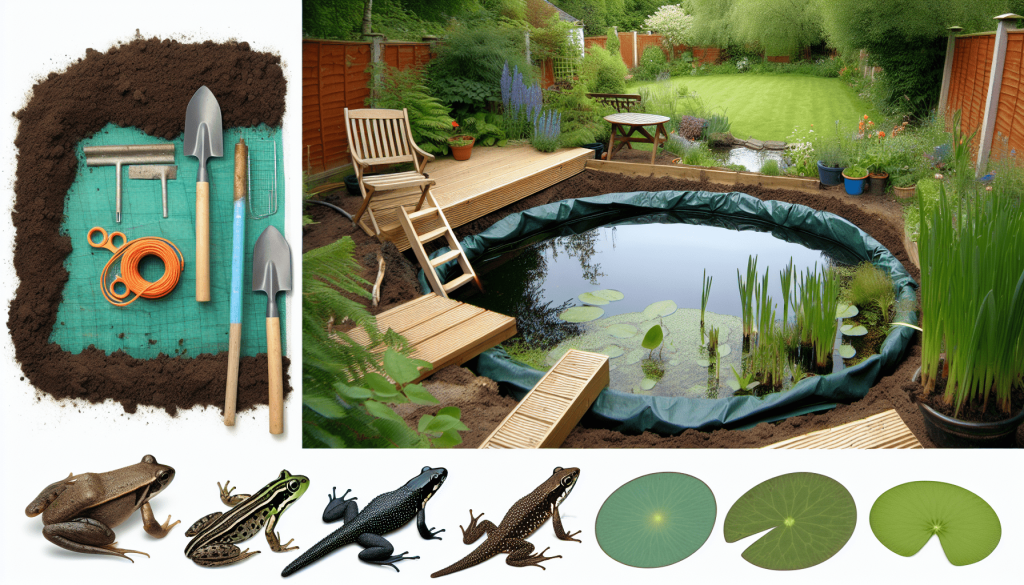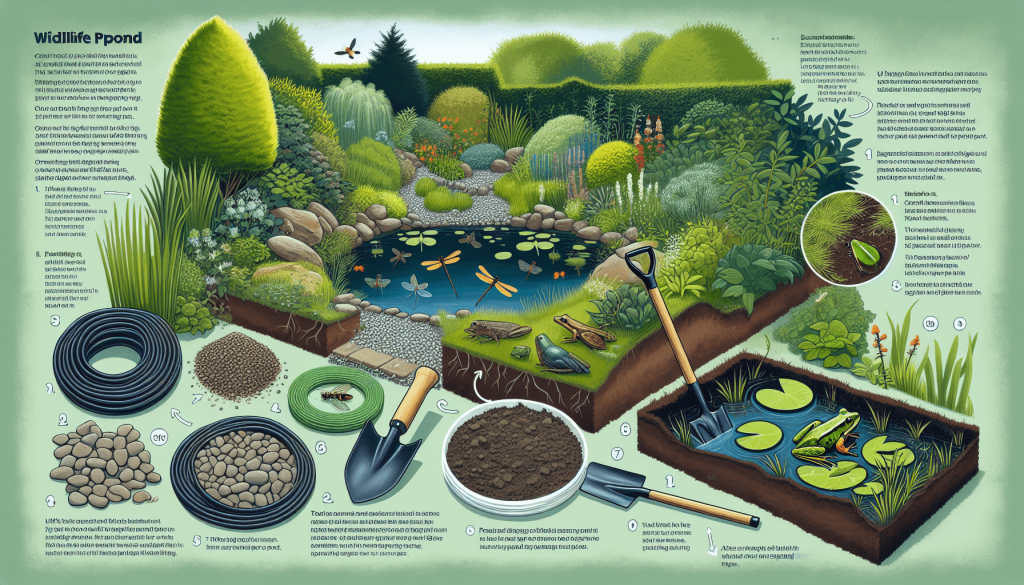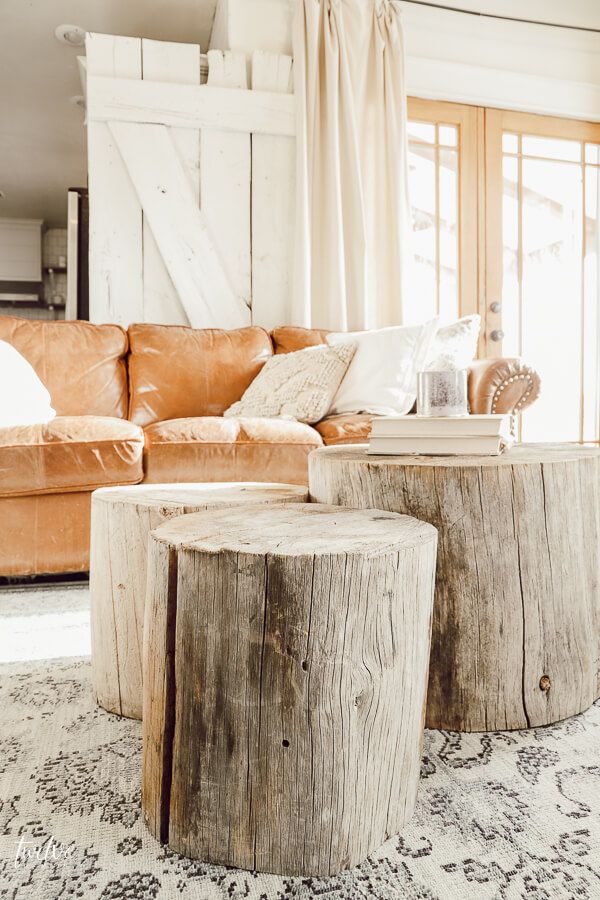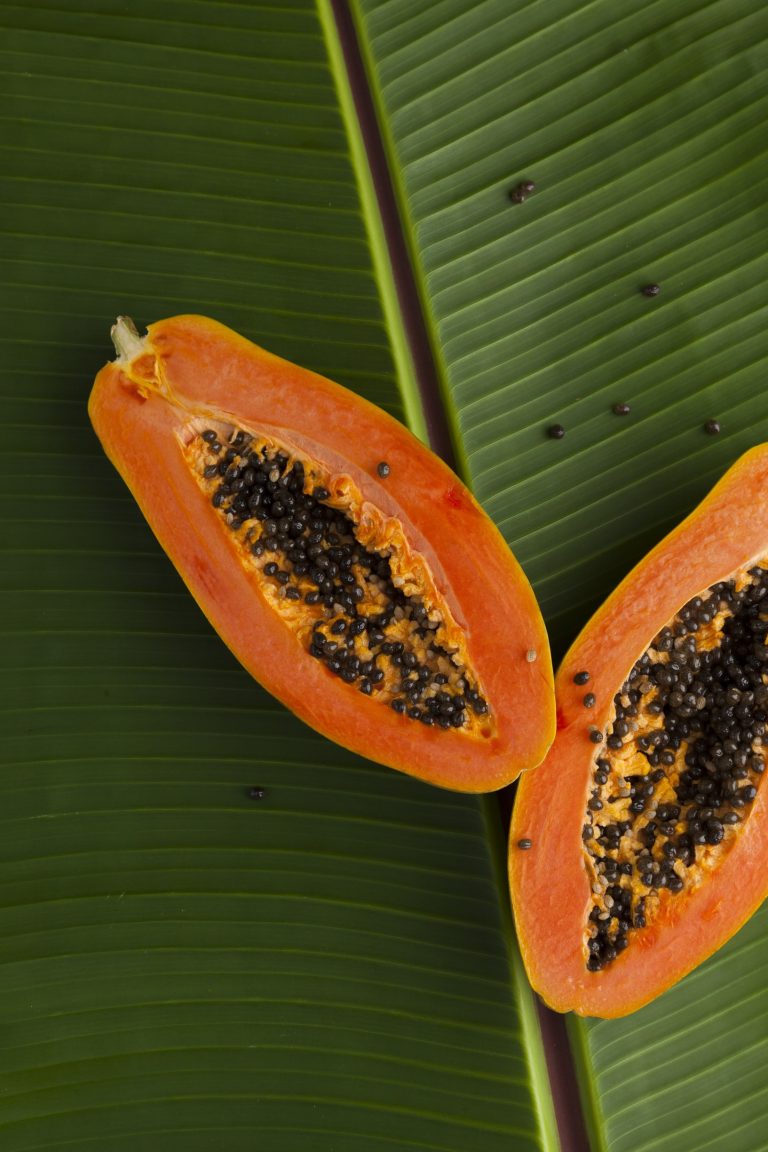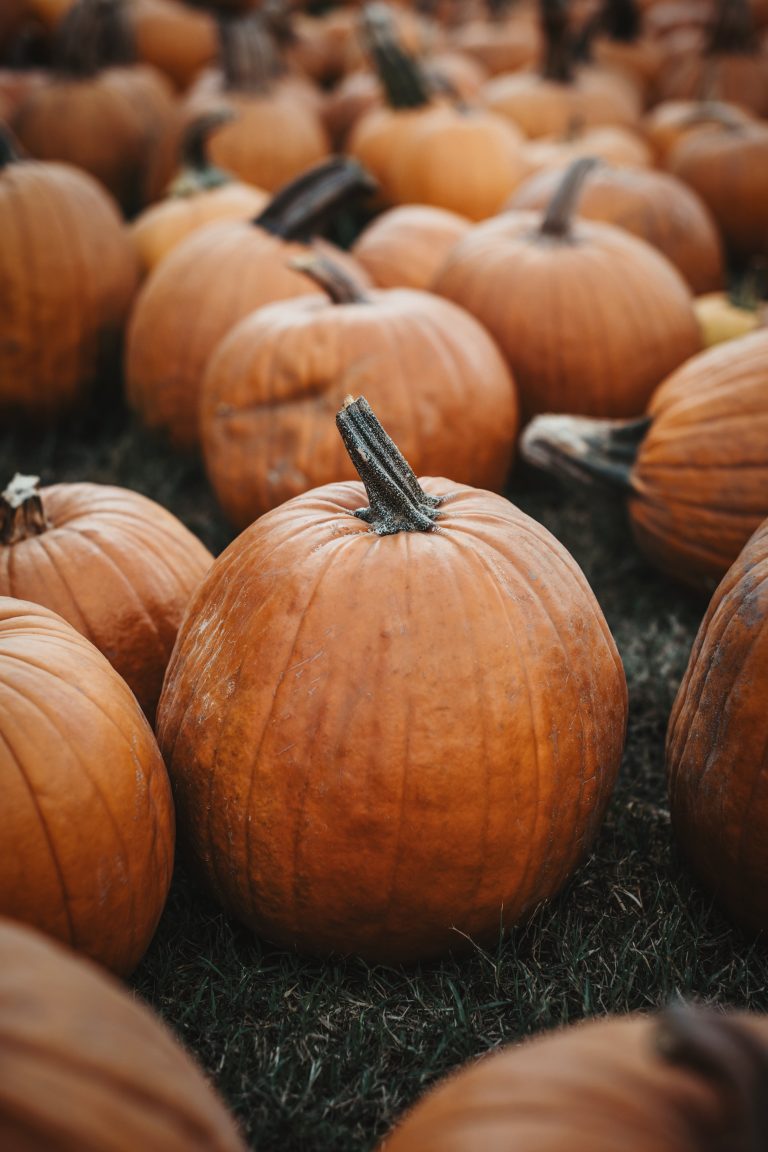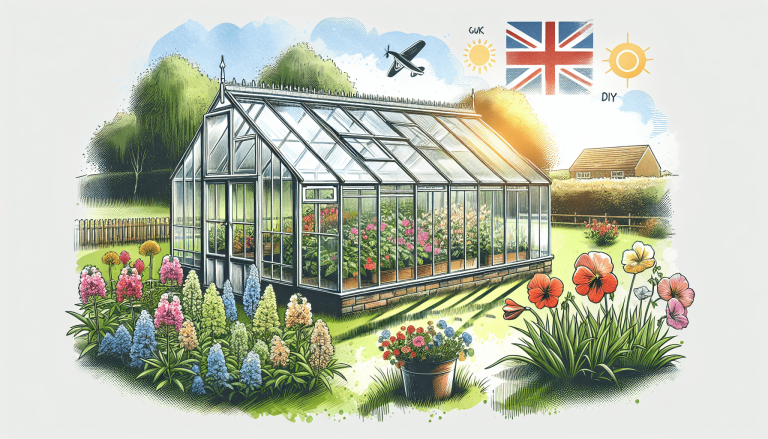Are you a nature lover residing in the UK? If so, you may be wondering how you can transform your garden into a thriving sanctuary for wildlife. Look no further! In this article, we will discuss practical tips and guidelines on how to create a garden with a wildlife pond in the UK. By following these steps, you can not only enhance the beauty of your outdoor space but also provide a safe haven for local flora and fauna. So grab your gardening tools and get ready to embark on an exciting journey into the world of wildlife ponds!
Table of Contents
ToggleChoosing the Right Location
Evaluate your garden
Before you start creating a wildlife pond in your garden, it’s essential to evaluate the space you have. Look for an area that is large enough to accommodate the size of pond you desire while still leaving ample room for surrounding vegetation. Consider the overall layout of your garden and how the pond will fit into the existing design.
Consider sunlight and shade
When choosing the location for your wildlife pond, take into account the amount of sunlight and shade the area receives. Most aquatic plants require at least six hours of direct sunlight each day to thrive, so it’s important to select a spot that offers sufficient light. Additionally, consider the impact of overhanging trees or nearby structures that may cast shade on the pond, as this could affect the growth of plants and algae.
Understand drainage
Proper drainage is crucial for the health and longevity of your wildlife pond. It’s important to choose a location that has good natural drainage to avoid waterlogging and potential flooding during heavy rainfall. Avoid areas that are prone to pooling or where water tends to accumulate, as this can negatively impact the pond ecosystem.
Watch out for overhanging trees
While trees can provide shade and aesthetic appeal to your wildlife pond, it’s important to be cautious of overhanging branches. Falling leaves, twigs, and other debris can collect in the pond, leading to poor water quality and potentially harming the wildlife. Consider the distance between the pond and any trees, ensuring that there is enough clearance to prevent unwanted debris from entering the water.
Designing the Wildlife Pond
Decide on the size and shape
Once you have chosen the location, it’s time to decide on the size and shape of your wildlife pond. This will depend on the available space as well as your personal preferences. Remember that larger ponds tend to support a more diverse range of wildlife, so if space allows, aim for a pond that is at least 15 square feet in surface area.
Include different depth zones
Creating different depth zones within your wildlife pond is essential for supporting a variety of aquatic life. Include shallow areas with a depth of around 8-12 inches, as well as deeper areas with depths reaching up to 3 feet. These depth variations provide different habitats for animals, allowing them to choose the area that best suits their needs.
Create shelves for plants
Plants play a crucial role in a wildlife pond, providing shelter, food, and oxygen for the inhabitants. When designing your pond, incorporate shelves or ledges around the edges to accommodate various types of aquatic plants. These shelves will allow the plants to sit at different water levels, catering to their specific growth requirements.
Consider a beach area
A beach area is a beneficial addition to a wildlife pond as it provides a safe entry and exit point for various creatures. Constructing a gently sloping beach area will not only make it easier for animals such as frogs and birds to access the water but also add an attractive feature to your pond’s design.
Add a sloping edge
Incorporating a sloping edge around your wildlife pond can greatly enhance its natural appearance. This gradual transition from land to water provides a smooth and inviting habitat for a range of wildlife species. Ensure the slope is gentle enough for animals to enter and exit the pond easily.
Preparing the Site
Remove existing vegetation
Before digging the pond hole, it’s important to remove any existing vegetation or turf in the chosen area. This will prevent unwanted plants from infiltrating the pond and potentially outcompeting the desired aquatic plants. Use a shovel or turf cutter to carefully remove the grass or other vegetation, ensuring the site is clear and ready for excavation.
Dig the pond hole
Once the area is clear, it’s time to dig the pond hole. The size and shape of the hole should correspond to the design plan you have established. Start by excavating the shallow areas first, gradually working towards the deeper sections. Take care to create smooth edges and a consistent depth throughout the pond.
Shape the pond edges
After digging the pond hole, it’s essential to shape the edges to create a natural-looking transition between the water and the surrounding land. Use a shovel or spade to taper the sides of the hole, angling them slightly inward. This will help prevent erosion and maintain the integrity of the pond structure.
Create a soil slope
To further enhance the aesthetics and functionality of your wildlife pond, consider creating a gradual soil slope around the edges. This slope should gradually extend outwards from the water’s edge, allowing for a smooth transition between the pond and the surrounding garden. Once shaped, use a rake to evenly distribute the soil and create a layered effect.
Compact the soil
To stabilize the pond’s structure and prevent shifting or sinking, it’s important to compact the soil thoroughly. Use a tamper or a heavy roller to compact the soil in and around the pond hole. This will help create a solid foundation for the pond liner and ensure the longevity of your wildlife pond.
Installing Pond Liner
Choose the right liner material
When selecting a pond liner, there are several options to consider. The most commonly used materials for wildlife ponds are PVC (Polyvinyl Chloride) and EPDM (Ethylene Propylene Diene Monomer) rubber liners. PVC liners are more affordable and easier to install, while EPDM rubber liners offer greater durability and flexibility. Choose a liner material that suits your budget and preferences.
Measure the pond dimensions
Before installing the pond liner, accurately measure the dimensions of your wildlife pond. This will ensure that you purchase a liner that is the correct size and shape. Measure the length, width, and depth of the pond hole and add an additional few feet to each measurement to provide overlap for securing the liner.
Place the liner in the hole
Carefully place the pond liner in the hole, ensuring that it adequately covers the entire area of the hole with enough overlap. Smooth out any creases or wrinkles in the liner to ensure a snug fit against the soil and prevent potential punctures. Take your time during this step to avoid damaging the liner.
Smooth out any wrinkles
Once the liner is in place, carefully smooth out any wrinkles or folds. These imperfections can create vulnerable areas in the liner and may lead to leaks or tears over time. Gently stretch the liner if necessary to eliminate any excess material and create a smooth surface.
Secure the liner
To secure the pond liner in place, use rocks, bricks, or other heavy objects around the edges of the pond. This will help hold the liner firmly against the soil and prevent it from shifting or bunching up. Alternatively, you can also use specialized pond liner securing materials such as liner clips or anchor stakes for added stability.
Adding Pond Accessories and Features
Install a wildlife-friendly pond pump
A pond pump is a vital component of a wildlife pond, as it helps circulate and aerate the water. Choose a pump that is suitable for the size of your pond and opt for one specifically designed for wildlife ponds. A wildlife-friendly pond pump will have features such as low flow rates or adjustable settings to prevent harm to small animals.
Include a pond filter
To maintain water clarity and quality in your wildlife pond, consider installing a pond filter. A filter helps remove debris, excess nutrients, and harmful chemicals from the water, creating a healthier environment for aquatic plants and wildlife. Choose a filter system that is appropriate for the size and depth of your pond.
Integrate a pond aerator
A pond aerator introduces oxygen into the water, promoting a healthy ecosystem and preventing the build-up of harmful gases. It also helps maintain proper water circulation and prevents stagnation. Select an aerator suitable for the size of your wildlife pond and ensure it is placed in a location that allows for even distribution of oxygen throughout the water.
Add a wildlife island or platform
Creating a wildlife island or platform in your wildlife pond provides a safe haven for animals and plants. This feature can be made by using rocks, logs, or floating platforms to create a stable surface above the water. It offers resting spots and refuge for small animals, such as frogs and insects, and adds an interesting focal point to your pond.
Incorporate rocks and logs
Adding rocks and logs to your wildlife pond not only enhances its natural appearance but also provides essential habitats for various organisms. Create submerged areas with rocks and logs, allowing animals to hide, feed, and breed. Use different sizes and arrange them strategically to create a diverse range of microhabitats within the pond.
Selecting Suitable Pond Plants
Choose native aquatic plants
When selecting pond plants for your wildlife pond, opt for native species whenever possible. Native plants have adapted to the local environment and will provide the most suitable habitat for local wildlife. They also require less maintenance and are more likely to thrive in your specific climate conditions.
Use different plant types
Incorporate a variety of plant types in your wildlife pond to create a balanced ecosystem. Include emergent plants, such as cattails and reeds, which provide cover and nesting sites for birds. Submerged plants, such as hornwort and watermilfoil, oxygenate the water and provide shelter for fish and invertebrates. Floating plants, like water lilies and duckweed, provide shade and help reduce excess nutrients.
Consider floating plants
Floating plants are an excellent addition to any wildlife pond. They introduce shade, which helps regulate water temperature and reduce the growth of algae. Floating plants also provide cover for aquatic life and create an attractive layer of greenery on the water’s surface. Species such as frogbit, water lettuce, and water hyacinth are popular choices for floating plants.
Include submerged plants
Submerged plants are essential for maintaining water clarity and quality in your wildlife pond. They absorb excess nutrients, help prevent algae growth, and provide oxygen for the aquatic animals. Choose species like elodea, pondweed, and water starwort to create a healthy and balanced underwater habitat.
Integrate marginal plants
Marginal plants thrive in the shallow areas surrounding the edge of the pond. They provide cover, food, and nesting sites for wildlife, as well as add aesthetic appeal to the pond. Marsh marigold, water forget-me-not, and yellow flag iris are examples of attractive marginal plants that can enhance the biodiversity of your wildlife pond.
Introducing Wildlife to the Pond
Attract birds with bird-friendly features
To attract birds to your wildlife pond, incorporate bird-friendly features such as perches, nesting boxes, and bird feeders in the nearby area. Planting shrubs and trees around the pond can provide additional shelter and nesting sites for a variety of bird species. Ensure there is also ample access to drinking water either within the pond or nearby.
Encourage frogs and toads
Frogs and toads play a vital role in the ecosystem of a wildlife pond. To attract these amphibians, create shallow areas within the pond that provide access to the water for breeding and foraging. You can also place logs or stones at the water’s edge to offer hiding spots and encourage these beneficial creatures to call your pond home.
Provide hiding places for insects
Insects are an essential part of the pond ecosystem, serving as a food source for many other wildlife species. Create sheltered areas within your wildlife pond using rocks, logs, or aquatic plants like waterlilies. These hiding places will attract insects and provide valuable habitat for their life cycles.
Create shallow areas for bathing
Birds and other animals may use shallow areas of the pond for bathing. Ensure there are gently sloping areas or shallow shelves where they can safely access the water for bathing and preening. These areas should have a depth of around 1-2 inches to accommodate the needs of these creatures.
Offer food and water sources
To attract and sustain wildlife in your pond, it’s important to provide various food sources and accessible water. Native plants in and around the pond will naturally provide food, but you can also consider placing bird feeders, insect houses, or offering supplemental food like mealworms or birdseed. Additionally, ensure there are water sources nearby for animals to drink from if the pond is not easily accessible.
Maintaining the Wildlife Pond
Monitor water quality regularly
Regularly monitoring the water quality of your wildlife pond is crucial for the health of the ecosystem. Test the water’s pH, ammonia, nitrite, and nitrate levels using appropriate test kits. Keep a record of the results and address any imbalances promptly to prevent issues such as algae blooms or fish health problems.
Remove excessive algae
Algae growth is a common issue in wildlife ponds, especially during warmer months. While some algae is normal and beneficial for the ecosystem, excessive growth can cause imbalances in the pond. Remove excess algae using a pond net, and consider introducing algae-eating fish, such as goldfish or koi, to help control algae growth naturally.
Control invasive species
Invasive plant species can quickly take over a wildlife pond and disrupt the balance of the ecosystem. Regularly inspect your pond for any signs of invasive plants, such as water hyacinth or Parrot’s feather, and remove them promptly. Be cautious when introducing new plants or materials into the pond to prevent the spread of invasive species.
Conduct seasonal clean-ups
Performing seasonal clean-ups is essential for maintaining the cleanliness and functionality of your wildlife pond. Remove any fallen leaves, debris, or dead plant matter that may have accumulated in and around the pond. Trim back overhanging vegetation to prevent excessive leaf litter from entering the water.
Inspect and repair pond equipment
Regularly inspect and maintain the pond equipment, such as pumps, filters, and aerators. Clean or replace filters as needed to maintain optimal performance. Check for any leaks, cracks, or clogs in the equipment and make necessary repairs or replacements. Proper maintenance will ensure the longevity and efficiency of these essential components.
Considerations for Safety and Legalities
Ensure child and pet safety
When designing and maintaining a wildlife pond, it’s essential to prioritize safety, particularly when children or pets are present. Install sturdy barriers or fences around the pond to prevent accidental entry. Consider adding a safety cover or netting to further protect against falls or intrusion. Always supervise children and pets when near the pond to prevent accidents.
Check local regulations and permits
Before creating a wildlife pond, it’s important to check with your local authorities regarding any regulations or permits required. Some areas may have specific guidelines for the size, depth, or construction of ponds. Ensure that you comply with all applicable regulations to avoid any legal issues.
Consider pond accessibility
Make your wildlife pond accessible for wildlife by incorporating gentle slopes or ramps. Ensure that animals such as hedgehogs or birds can easily enter and exit the pond. Avoid steep edges or structures that may trap or harm animals. Providing accessibility will encourage a wider range of wildlife to visit and utilize your pond.
Install a pond cover
A pond cover can provide added safety and protection for your wildlife pond. It helps prevent the entry of debris, leaves, or unwanted animals, while also reducing the risk of accidental falls. Choose a mesh or netting cover that allows for air circulation and does not impede the natural movement of wildlife.
Secure the pond perimeters
To prevent erosion and maintain the integrity of the pond edges, secure the perimeter of your wildlife pond. Use rocks, logs, or other natural materials to reinforce the edges and prevent soil erosion. This will help maintain the stability of the pond structure and avoid any potential collapses.
Enjoying the Benefits of a Wildlife Pond
Observe a thriving ecosystem
One of the most rewarding aspects of having a wildlife pond is the opportunity to observe a thriving ecosystem right in your own backyard. As you maintain and care for your pond, you will witness a fascinating array of wildlife interactions, from dragonflies hovering above the water to birds bathing on the edges. Take the time to observe and appreciate the ecological relationships that unfold within your wildlife pond.
Attract a variety of wildlife species
By creating a wildlife pond, you are providing a vital habitat for a wide range of creatures. From frogs and toads to birds and insects, your pond will attract and support numerous wildlife species. Each animal that finds refuge in your pond contributes to the overall biodiversity of your garden and helps create a balanced and sustainable ecosystem.
Create a tranquil and beautiful space
A wildlife pond not only brings life and activity to your garden but also creates a serene and beautiful atmosphere. The sound of water, the vibrant colors of plants, and the presence of wildlife all contribute to a tranquil and peaceful outdoor space. Enjoy the calming effects of your wildlife pond while immersing yourself in nature’s beauty.
Educate and engage with nature
Having a wildlife pond provides a wonderful opportunity for education and engagement with the natural world. Share your pond’s ecosystem with friends, family, and children, teaching them about the importance of wildlife conservation and the delicate balance of nature. Use your wildlife pond as a tool to foster a sense of environmental stewardship and inspire others to create their own wildlife-friendly spaces.
Contribute to conservation efforts
Creating a wildlife pond in your garden is a tangible way to contribute to conservation efforts. By providing a suitable habitat for local wildlife, you are actively participating in the preservation of biodiversity and helping to support threatened species. Your small act of creating a wildlife pond can have a positive and lasting impact on the wider ecosystem and the planet as a whole.
In conclusion, creating a wildlife pond in your garden is a rewarding venture that not only enhances the beauty of your outdoor space but also provides a haven for a diverse range of wildlife. By carefully choosing the right location, designing the pond with various features, and incorporating suitable plants, you can establish a thriving ecosystem that contributes to both the local environment and larger conservation efforts. Remember to maintain the pond regularly, prioritize safety and the adherence to local regulations, and enjoy the wonders of nature that unfold before your eyes.

